
Types of Search Intent in SEO: Rank Content on SERP #1
Mar 11, 2025 6 Min Read 3736 Views
(Last Updated)
Have you ever wondered why certain web pages rank higher than others, even when they seem to offer similar content? The answer often lies in its ability to align with the searcher’s intent behind the search query, in addition to offering high-quality content.
Search intent, or user intent, is the purpose behind every search query. Understanding it is crucial for creating content that satisfies the user’s needs and, consequently, ranks well on search engines. But what is this search intent that modern SEO trends seem to rave about? Yeah, we know it’s not clear yet.
So, if you want to understand different types of search intents in SEO, its importance, and various ways to optimize your content to serve the user’s search intent, this blog is just what you need to read. In a way, we hope we can serve your search intent too!
Table of contents
- What Are SEO Search Intents?
- Breaking Down SEO Search Intents
- Significance of SEO Search Intents
- Types of SEO Search Intent
- Informational Search Intent
- Commercial Search Intent
- Navigational Search Intent
- Transactional Intent
- How to Identify Search Intent Behind Specific Keywords
- Wrapping Up
- FAQs
- What is SEO search intent?
- Why is understanding search intent important for SEO?
- How can I identify the search intent behind keywords?
- What are the types of SEO search intent?
- How do I optimize content for informational intent?
- What is the best way to target navigational intent?
- How can I cater to users with commercial investigation intent?
- What strategies should I use for transactional intent?
- Can the same content target multiple search intents?
What Are SEO Search Intents?
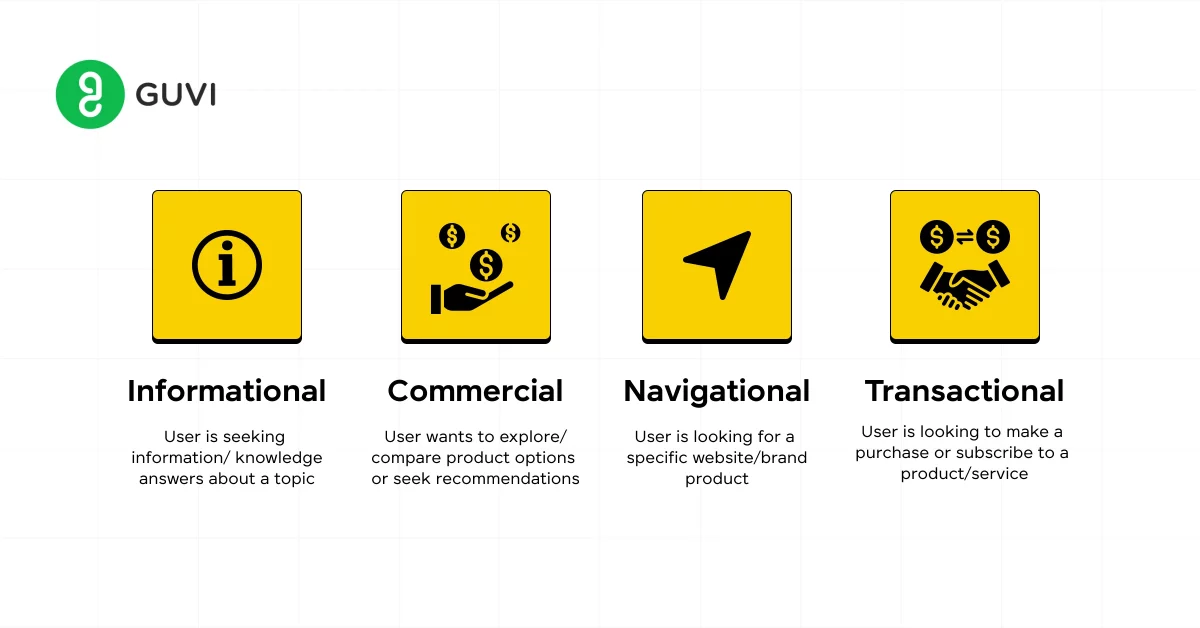
Search intent in SEO is about understanding why someone is conducting a specific search. Is the user looking to buy something, or are they searching for information? Perhaps they’re trying to navigate to a particular website.
Consider the search query “best running shoes.” This query suggests that the user is in the research phase, possibly leaning towards a purchase. A strategic approach to targeting this intent would involve creating content that lists the best running shoes, as well as comprehensive guides on choosing the right pair, including factors like foot type, cushioning, and terrain. See, immediately it becomes helpful to the user.
Recognizing the intent behind search queries allows marketers and content creators to tailor their content to meet these needs. For that, we need to first break down the search intents.
Also Read: What is Digital Marketing? Complete Beginner’s Guide
Enrolling in GUVI’s Digital Marketing course can help you become an expert in the digital world, regardless of your level of marketing expertise. Learn the ins and outs of email marketing, social media marketing, content production, SEO, and more from professionals in the field. Through practical projects and real-world case studies, acquire job-ready skills with globally recognized certifications.
Additionally, if you want to explore Marketing Research Techniques through a Self-paced course, try GUVI’s Marketing Research Techniques certification course.
Breaking Down SEO Search Intents
To effectively cater to search intents, it’s essential to break them down into understandable parts:
- The Query Itself: The words used in the search can give clues about the user’s intent. For example, “how to” indicates a quest for knowledge, whereas product names often signal a purchase intent.
- Context and Nuance: The same query can have different intents based on subtle nuances or the searcher’s context. For instance, “Apple” could relate to the fruit or the tech company, depending on additional words used or the user’s search history.
- Search Engine Interpretation: Search engines like Google use sophisticated algorithms to interpret search intent and provide the most relevant results. They analyze vast amounts of data to understand patterns and preferences.
Another example is the query “how to clean running shoes.” Now, this user is seeking information on cleaning shoes, making this search intent informational. Here, the content aimed at this intent should provide detailed cleaning instructions, perhaps including product recommendations and maintenance tips.
This is how content creators and SEO professionals dissect search intents and understand the underlying needs, to create content that aligns more closely with user expectations. We’ll discuss this in detail below.
But you must’ve understood one thing for sure, that search intent is an extremely crucial factor in increasing your content’s visibility and engagement. Well, that’s one way to see why search intent is important. Let’s look at it more closely.
Must Explore: Data-Driven Marketing: Benefits and Challenges
Significance of SEO Search Intents
Understanding and optimizing for SEO search intents is not just a best practice. it’s one of the most important SEO ranking factors, as we discussed earlier.
See, Google’s algorithm now plays ‘match the following’ with the user’s search query and your content. It’ll only show the content that exactly and completely answers the user’s query and caters to the search intent behind the query.
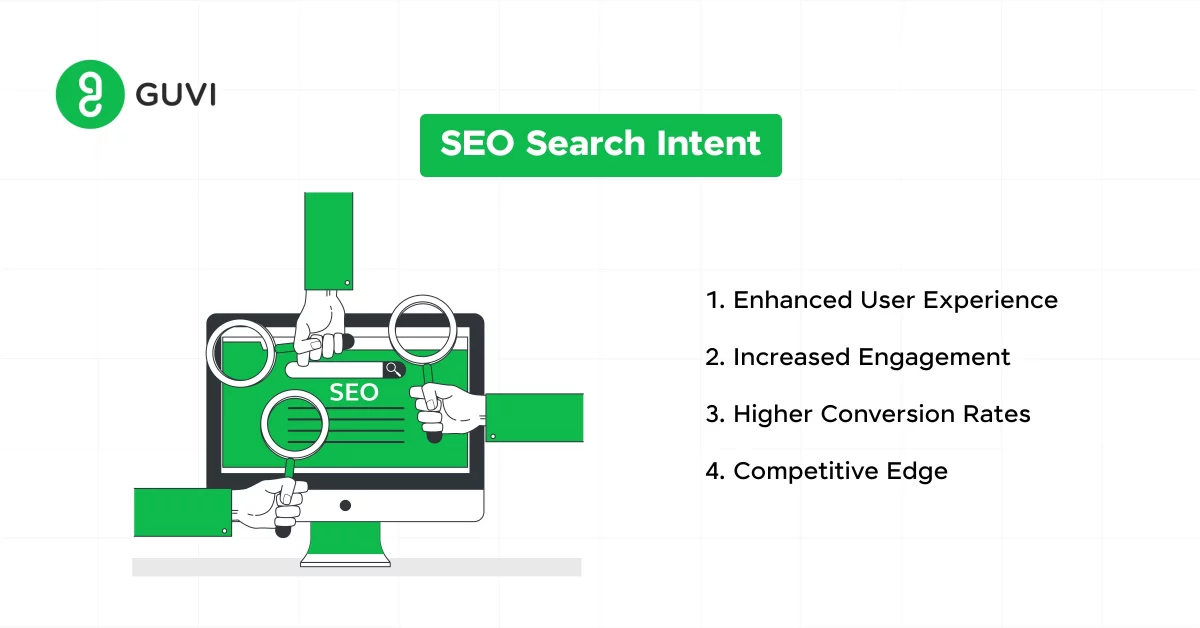
In research, it is found that pages optimized for specific intents have a 50% higher chance of converting visitors into customers. This again, underlines the necessity of optimizing your content for search intent.
Why SEO Search Intents Matter:
- Enhanced User Experience: By aligning content with user intent, websites can provide more relevant and valuable information, improving the overall user experience. This relevance is rewarded by search engines through higher rankings.
- Increased Engagement: Content tailored to specific intents tends to engage users more effectively, reducing bounce rates and encouraging deeper website exploration.
- Higher Conversion Rates: When content meets the user’s intent, the likelihood of converting visitors into customers significantly increases. For example, a well-optimized product page for transactional intent can lead to direct sales.
- Competitive Edge: Understanding and optimizing for search intents can provide a competitive advantage, positioning your content above others that might not be as finely tuned to the audience’s needs.
But how will you cater to these search intents? I mentioned informational search intent earlier. It’s a type of search intent in SEO. There are three more. Let’s talk about that in detail.
Must Know About Impact of Loading Time on User Experience
Types of SEO Search Intent
Understanding the different types of search intents is crucial for tailoring your SEO strategy to meet the specific needs of your audience. Essentially, there are four main types of SEO search intents: informational, navigational, commercial, and transactional.
Each of these intents requires a different approach toward content creation and optimization to effectively meet the user’s needs and achieve the desired outcome.
Let’s understand about various search intents in SEO one by one:
1. Informational Search Intent
Informational search intent caters to searches conducted by users seeking knowledge, guidance, or answers to specific questions. These queries often stem from a place of curiosity or a need to solve a problem, without any immediate intention of making a purchase.
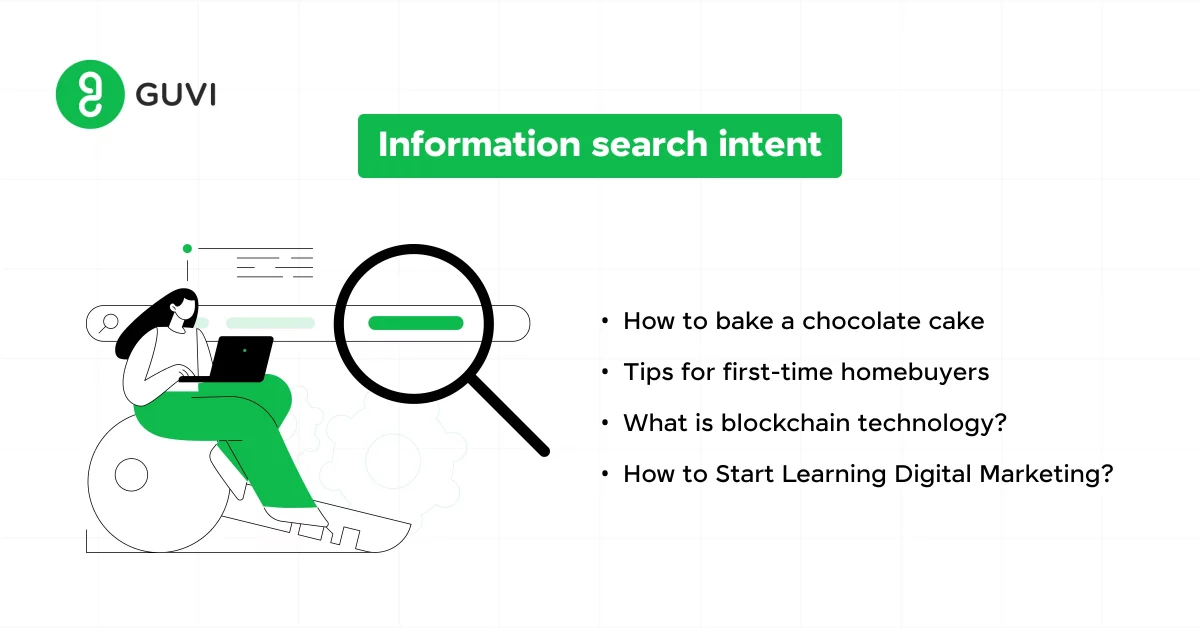
Content that addresses informational intent should aim to educate and inform, providing clear, authoritative answers and in-depth explanations.
Examples of Informational Search Intent Queries:
- “How to bake a chocolate cake”
- “Tips for first-time homebuyers”
- “What is blockchain technology?”
- “How to Start Learning Digital Marketing?”
How to Cater to Information Search Intent:
- Focus on educating the user.
- Provide thorough, well-researched content.
- Anticipate and answer related questions.
Informational content should be comprehensive, covering topics thoroughly to satisfy the user’s query and potentially anticipate follow-up questions. The goal is to become a trusted resource for users, which, in turn, can build brand credibility and loyalty.
Also Read: How to Learn Digital Marketing
2. Commercial Search Intent
Users exhibiting commercial search intent are already in the comparative and evaluative phase of their buying journey. At this stage, they’re seeking the best option or the best fit for their needs across a brand, product, service, or domain.
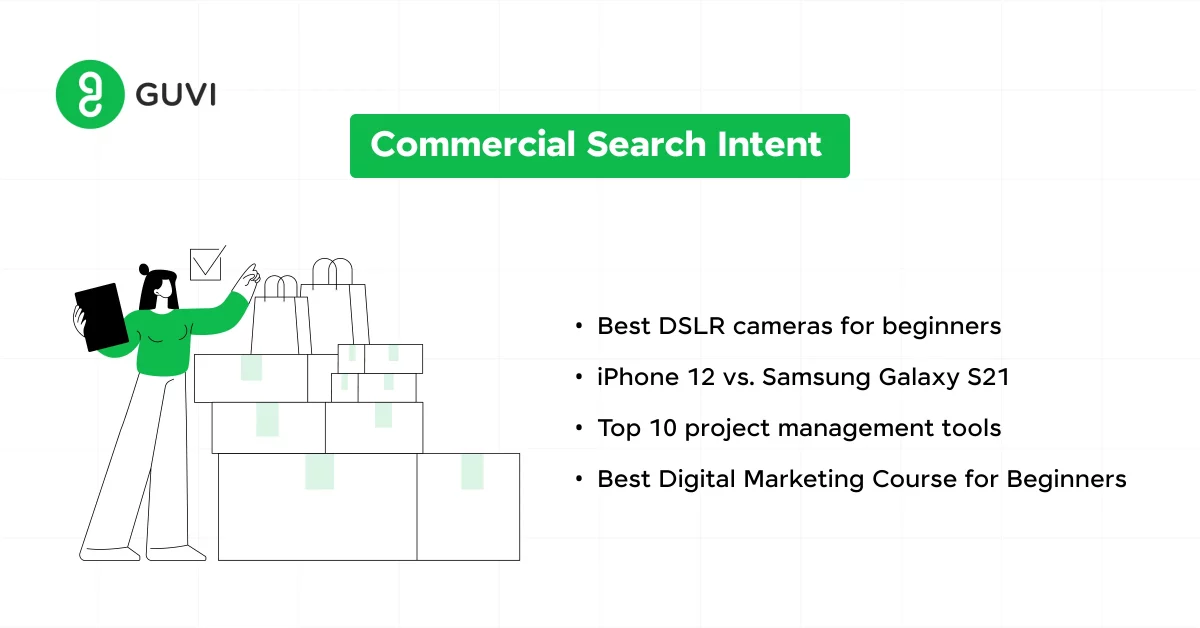
Queries related to commercial search intent include searches for reviews, comparisons, and best-of lists. They want more information regarding their purchase and the options available in the market so that they can make an informed decision.
Examples of Commercial Search Intent Queries:
- “Best DSLR cameras for beginners”
- “iPhone 12 vs. Samsung Galaxy S21”
- “Top 10 project management tools”
How to Cater to Commercial Search Intent:
- Provide comparative analysis and reviews.
- Highlight features, benefits, and differentiators.
- Build user confidence in decision-making.
Content targeting this intent should highlight the features and benefits of products/services and provide a comparative analysis that helps users make informed decisions. It’s about bridging the gap between general interest and readiness to purchase by building confidence in the user’s choice.
Find Out 8 Steps to Make an Effective Digital Marketing Plan
3. Navigational Search Intent
Navigational search intent is characterized by searches where the user’s goal is to locate a specific website or page. These users typically have a clear destination in mind, such as a particular brand’s homepage or a specific service page.
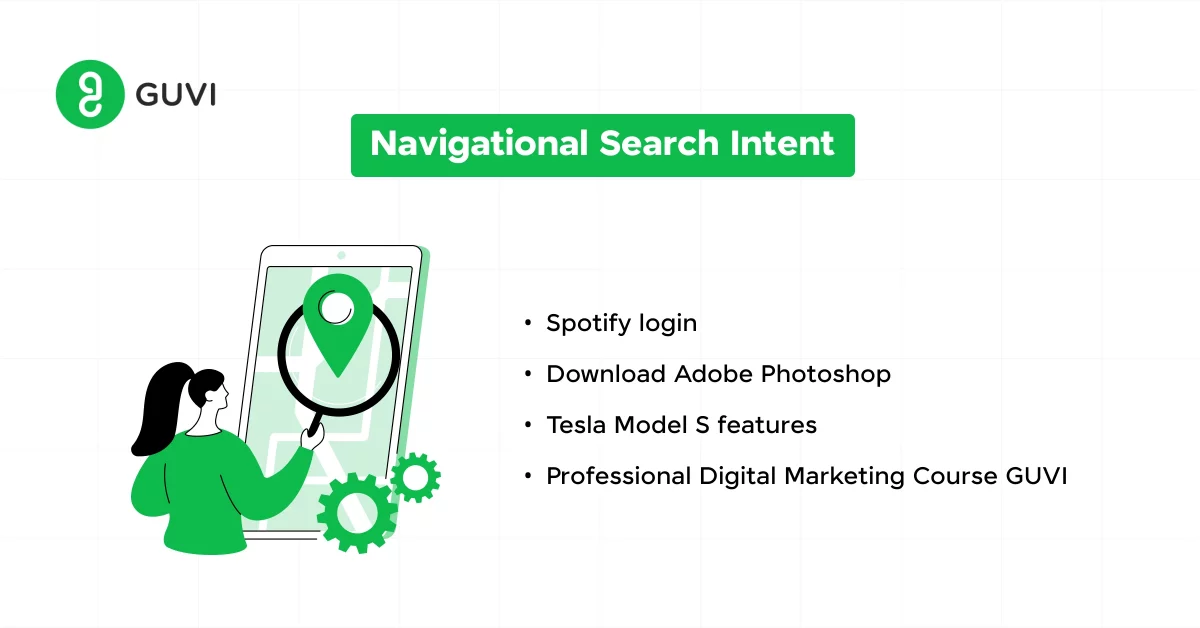
Rather than competing against competitors, the challenge or say, the goal of navigational search intent optimization is to ensure that users can find your brand easily when they’re already looking for it.
Examples of Navigational Search Intent Queries:
- “Spotify login”
- “Download Adobe Photoshop”
- “Tesla Model S features”
- “Professional Digital Marketing Course GUVI”
How to Cater to Navigational Search Intent:
- Optimize for brand and product names.
- Ensure easy website navigation.
- Highlight clear brand identity.
This requires optimizing for brand and product names while ensuring your site’s architecture is intuitive and user-friendly. For businesses, this means ensuring your SEO strategy includes strong brand visibility and that your website clearly communicates your identity and offerings.
Also Read: Top 15 B2B Digital Marketing Strategies [Updated]
4. Transactional Intent
Transactional intent is the most direct of the search intents, with users actively looking to make a purchase or complete a specific action, such as signing up for a service. They’re basically at the last stage of their buying journey, where the decision is finalized.
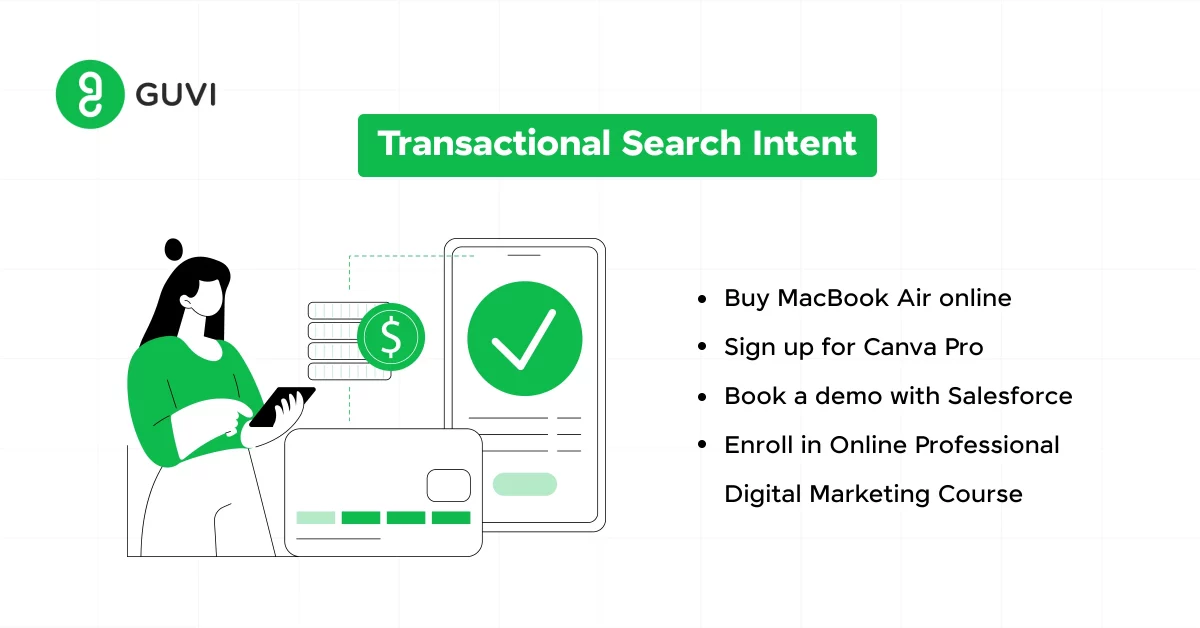
These searches are characterized by a high level of purchase intent. They’re fully aware of the brand, the specific product/service they want to buy/opt for, and the steps of completing the action. So they just search directly.
Examples of Transactional Search Intent Queries::
- “Buy MacBook Air online”
- “Sign up for Canva Pro”
- “Book a demo with Salesforce”
- “Enroll in Online Professional Digital Marketing Course”
How to Cater to Transactional Search Intent:
- Optimize product pages well.
- Focus on conversion optimization.
- Provide clear, compelling calls to action.
- Simplify the purchase or sign-up process.
Content and SEO strategies targeting transactional intent need to focus on conversion optimization, providing clear, compelling calls to action, and simplifying the purchase process.
This includes ensuring that product pages are optimized for both search engines and user experience, with detailed product information, pricing, and easy access to the checkout process.
While there are traditionally these four categories of SEO search intents, there can exist various search intents based on an array of specific desires and questions that individuals have.
Each search reflects a unique combination of the user’s current context, emotional state, and specific needs or questions, far beyond what can be neatly categorized into the traditional four intents.
These intents can range from seeking very detailed, technical explanations in scholarly articles to looking for quick, practical advice or factual information. Now that you know about the types of search intents in SEO, how do you recognize them?
Also Explore: The Scope of Digital Marketing
How to Identify Search Intent Behind Specific Keywords
Identifying the search intent behind specific keywords is a critical skill for SEO professionals. It allows you to tailor your content strategy to meet the needs of your audience precisely. Here are key ways to discern the search intent behind a keyword, ensuring your content aligns with what searchers are truly seeking:
- Analyze the Keyword Itself: Often, the choice of words in a query provides the first clue. Words like “how,” “why,” and “what” typically signal informational intent, whereas brand names or product-specific terms may indicate navigational or transactional intent. Keywords including “buy,” “price,” or “for sale” clearly point towards transactional intent.
- Examine Search Engine Results Pages (SERPs): A quick search of the keyword in question can reveal a lot about intent based on the types of content that rank highest. For example, if the top results are product pages, the intent is likely transactional. If they’re blog posts or articles, the intent is probably informational.
- Look for Ad Presence: A high number of ads, especially product ads, on the SERP for a particular keyword often indicates commercial or transactional intent, as advertisers target keywords with a high conversion potential.
- Use Keyword Tools: Many SEO tools offer features that help identify search intent by analyzing keyword patterns, search volumes, and SERP features. These tools can provide insights into the likely intent behind keywords based on aggregated data.
- Consider the User’s Journey: Understanding where in the buying cycle your target audience is can help infer intent. Early-stage users might lean towards informational searches, while those closer to a purchase might use more transactional keywords.
- SERP Features Analysis: Google often tailors SERP features (like featured snippets, knowledge panels, or shopping results) to match the presumed intent of a search. Analyzing these can give clues about the intent Google associates with certain queries.
- Audience and Contextual Insights: Sometimes, the broader context of your target audience’s interests and behaviors can hint at intent. For instance, if your audience is primarily DIY enthusiasts, even seemingly commercial keywords might have an informational intent for this group.
Each of these methods provides a different lens through which to view keyword intent, offering a more nuanced understanding that can guide your content creation and optimization efforts.
Must Read: How Long Would it Take to Learn Digital Marketing?
Join GUVI’s Digital Marketing Course to kickstart your journey in this exciting field. Gain expertise in ChatGPT, WordPress, Meta Business Suite, Google Analytics, Youtube Analytics, Google Ads Manager, and more. Master essential skills in SEO, social media marketing, email marketing, content creation, and digital advertising tactics to excel in the Digital Marketing industry. Additionally, if you want to explore Marketing Research Techniques through a Self-paced course, try GUVI’s Marketing Research Techniques certification course.
Wrapping Up
From the above discussion, it’s clear that understanding and optimizing for these intents has become the foundation of a successful SEO strategy. By aligning your content with the specific needs and desires of your audience, you can create a more engaging, valuable, and effective online presence.
It’ll significantly enhance the user experience, leading to higher engagement rates and increased loyalty. Remember, your ability to pick the pulse of your audience through what they search will offer you the much-needed edge in the over-crowded and highly competitive digital landscape.
Must Read: The Top 15 Most Important SEO Ranking Factors
FAQs
SEO search intent refers to the underlying purpose or goal behind a user’s search query, such as seeking information, finding a specific website, comparing products, or making a purchase.
Understanding search intent is crucial for creating content that meets users’ needs, improving user experience, and enhancing search engine rankings.
Analyze the keyword, examine SERPs, look for ad presence, use keyword tools, consider the user’s journey, analyze SERP features, and gather audience insights.
The main types are informational, navigational, commercial investigation, and transactional.
Create educational content that answers questions and provides in-depth information on topics relevant to your audience.
Optimize for brand and product names, and ensure your website is easy to navigate.
Provide comparative analysis, reviews, and detailed product information to help users make informed decisions.
Focus on conversion optimization, including clear calls to action and a streamlined purchase process.
Yes, but it’s crucial to understand the primary intent and tailor the content accordingly, while also addressing secondary intents where possible.























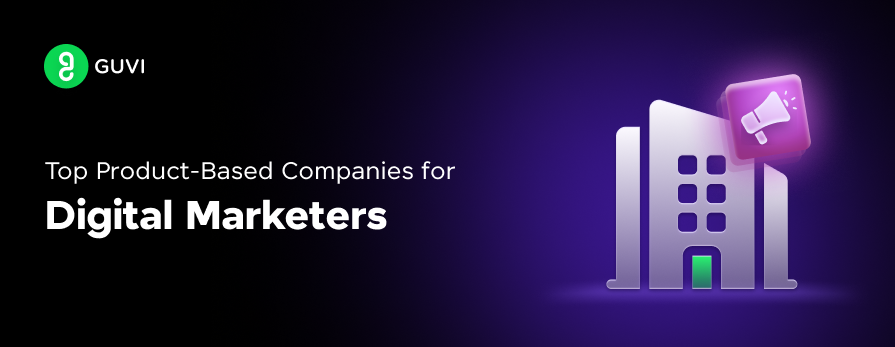



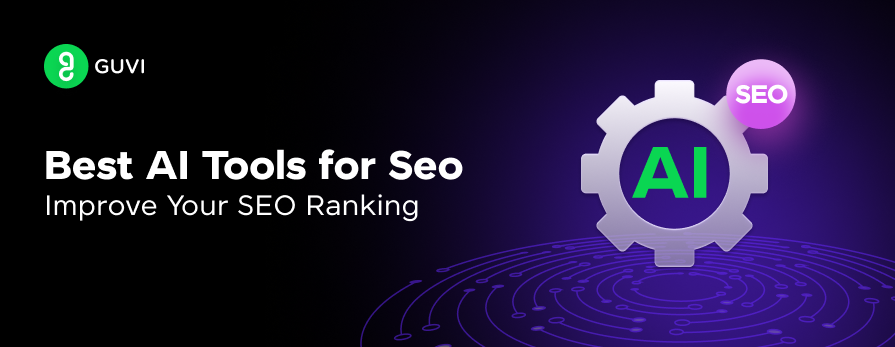


Did you enjoy this article?